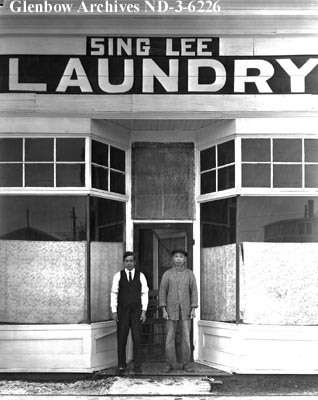orientallyyours:Sing Lee Laundry in 1932, Edmonton, Alberta. Photographer unidentified. Reference nu
orientallyyours:Sing Lee Laundry in 1932, Edmonton, Alberta. Photographer unidentified. Reference number: ND-3-6226Following the Fraser River gold rush and the construction of the Canadian Pacific Railway, which brought thousands of Chinese labourers to British Columbia in the late 19th century, many of these ‘sojourners’ or immigrants moved to others parts of Canada to look for work. Due to racial hostility, a fear of competition from cheap ‘Oriental’ labour for jobs, language barriers, and socio-economic discrimination, the Chinese were discouraged from entering many occupations. Instead, they established their own businesses such as hand laundries, groceries, and restaurants (all labour-intensive work), as a means to earn a living. Many set up laundries in railway towns and cities east of the Rockies, and even as distant as Québec, the Maritimes, and Newfoundland. Head taxes and discriminatory legislations passed at the provincial and federal levels did not encourage the immigration of family members who were left behind in China. Eventually, the Chinese Immigration Act (also known as the Chinese Exclusion Act) (1923-1947) banned most forms of Chinese immigration to Canada. Sources: Glenbow Museum Archives, Canadian Museum of History -- source link
Tumblr Blog : orientallyyours.tumblr.com
#china#canada#1930s#chinese-canadian#asian canadian
